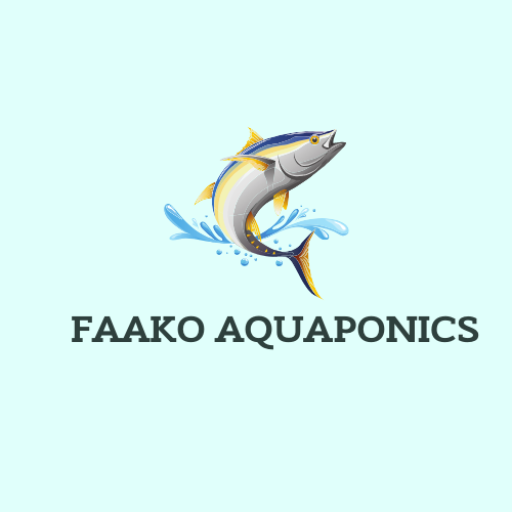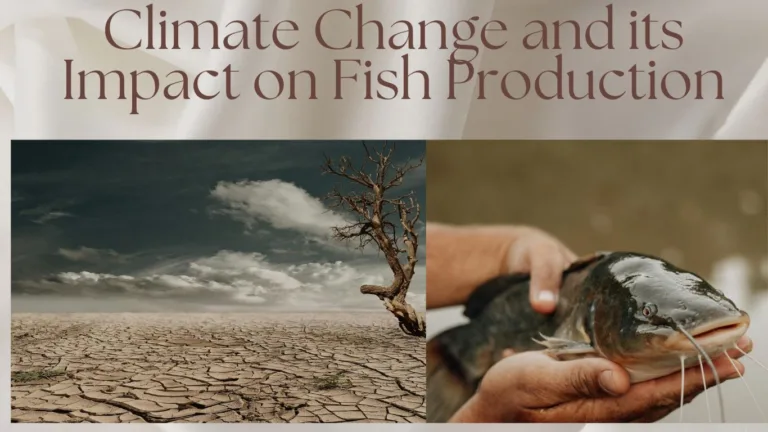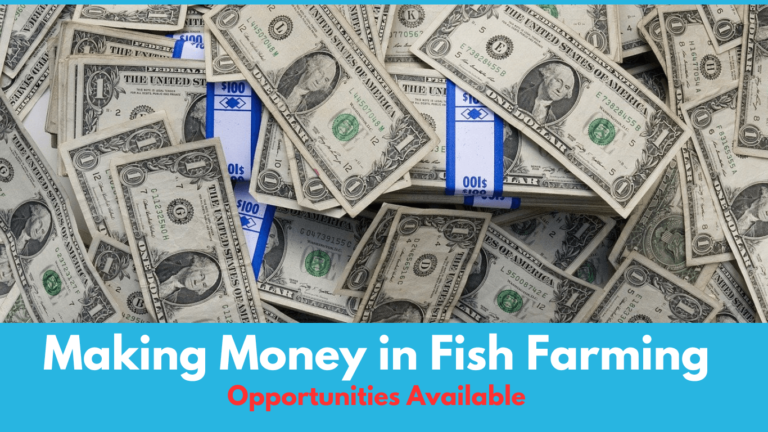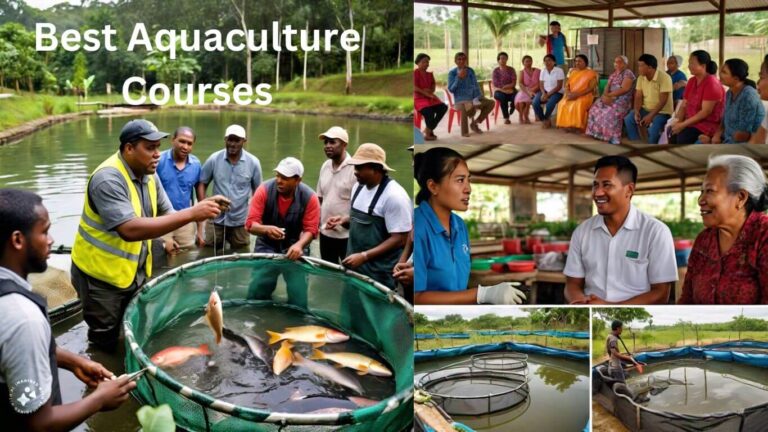Climate change is significantly reshaping our planet, affecting critical sectors like agriculture and fisheries, with fish production facing unprecedented challenges. Rising temperatures, ocean acidification, disruptive weather patterns, and shifts in aquatic ecosystems. It can directly or indirectly impact the health and productivity of finfish and shellfish, essential for food security and economic stability worldwide [1][2][3][4]. The effects of these changes on aquaculture—the cultivation of aquatic animals and plants for food—emphasize the need for immediate action. Aquaculture’s contribution to global greenhouse gas emissions underscores the urgency to address environmental impacts through sustainable practices, ensuring the stability of fish farms, fish feed production, and the broader fish production in the world [2].
As we delve deeper into the ramifications of a changing climate on aquatic ecosystems, we recognize the importance of fish tanks, recirculating aquaculture systems, and fisheries management in sustaining fish production. Strategies for adaptation are crucial, not just for the economic vitality of fish farmers. Those involved in farmed fish operations but also for indigenous communities are relying on these resources for subsistence and cultural practices [2][3][4]. This article aims to explore the profound impacts of climate change on aquaculture and fish farming, offering insights into adaptive strategies. This led to sustainable aquaculture and the success stories of resilience in the face of environmental challenges. Through a comprehensive approach, we can mitigate the adverse effects and secure a sustainable future for fish production globally.
Understanding the Impact of Climate Change on Aquaculture
Understanding the impact of climate change on aquatic ecosystems involves examining both the direct and indirect effects on aquaculture production. This as well as the broader implications for fish species distribution, productivity, and the socio-economic consequences for communities reliant on fisheries and aquaculture.
Direct and Indirect Effects on Aquaculture Production
Direct and Indirect Effects on Aquaculture Production
- Direct Effects: These involve changes to the physical environment and physiology of finfish and shellfish stocks within production systems. This include alterations in water temperature, salinity, and oxygen levels, which can affect growth rates, reproductive success, and survival [1].
Indirect Effects: These are mediated through changes in the ecosystem, such as shifts in primary and secondary productivity. This can influence food availability for farmed fish. Additionally, climate change can affect the cost of inputs such as fish feed (comprising fishmeal and fish oil). And other goods and services essential for aquaculture operations [1].
Impacts on Fisheries Production and Biodiversity
- Geographical Shifts: Climate change is causing shifts in the distribution of fish species, with high-latitude regions experiencing. This increases in fish production, while low-latitude regions face declines. This redistribution has significant implications for the management and sustainability of fisheries [5].
- Mortality and Abundance: The abundance, migratory patterns, and mortality rates of wild fish stocks are being influenced by climate change. This affect the availability of species for both wild capture and farmed fish [6].
- Socio-Economic Impacts: The viability of species for farming in specific regions is changing, leading to social and economic consequences for communities dependent on fisheries and aquaculture. These impacts are more pronounced in communities with lower socioeconomic status. Also highlighting the need for targeted adaptation and mitigation strategies [6][3].
Predicted Climate Change Elements Threatening Aquaculture
- Rising temperatures, ocean acidification, diseases, harmful algal blooms, changes in rainfall patterns, sea-level rise, and severe climatic events are among the key elements predicted to threaten aquaculture production and sustainability [1].
- Ocean warming affects dissolved oxygen concentrations and primary productivity, disrupting predator/prey relationships. This ocean acidification poses significant challenges for the growth of shellfish larvae [13][14].
The multifaceted impacts of climate change on aquatic ecosystems underscore the urgency for adaptive management strategies and mitigation efforts to ensure the resilience and sustainability of aquaculture and fisheries. These strategies must be informed by a comprehensive understanding of both the direct and indirect effects of climate change. This as well as the specific vulnerabilities and adaptive capacities of different species and communities [1][5][6][13][14].
Challenges Faced by Fish Farmers Due to Temperature Shifts
Fish farmers face a multitude of challenges due to temperature shifts, primarily driven by climate change. These challenges significantly impact the distribution, health, and productivity of various fish species. It directly affecting fish production. Below are some of the critical issues and their implications:
- Distribution and Abundance Shifts:
- Tuna: Climate change is expected to drive tuna stocks in a northerly direction, reducing access for Vietnamese fishers. This could lead to decreased catches and economic losses [13].
- Pangasius: Increased flooding and degraded water quality may adversely affect pangasius production, a critical aquaculture species in Vietnam, potentially leading to reduced yields [13].
- Salinity Intrusion and Disease Risks
- Saline Water Intrusion: Increased rainfall and sea level rise can lead to saline water intrusion into freshwater systems. This adversely affect production areas by altering the habitat conditions for freshwater species [13].
- Disease Incidence: Warmer temperatures can stress fish, increasing their susceptibility to viral or bacteriological diseases. It can lead to higher mortality rates and reduced productivity [13].
- Species-specific Impacts:
- Tilapia: Rising temperatures can slow growth and decrease production in tilapia aquaculture. Climate models project faster temperature increases in northern Vietnam, posing a significant risk to tilapia production without adaptive measures [13].
- Shrimp: Climate change can adversely affect shrimp growth due to stress and increase mortality due to water quality issues and disease. Weather fluctuations, heavy rainfall, and sea level rise pose serious risks to shrimp production [13].
These challenges underscore the need for adaptive strategies in aquaculture to mitigate the impacts of climate change on fish production. Addressing these issues requires comprehensive management and policy interventions, including the development of resilient aquaculture practices, improved disease monitoring and control, and infrastructure adjustments to cope with increased salinity and flooding risks.
Adaptive Strategies for Sustainable Aquaculture
Adapting to the challenges caused by climate change in aquaculture requires a multifaceted approach. Focusing on both immediate and long-term strategies to ensure the sustainability of fish production. The following points outlined key adaptive strategies and considerations for sustainable aquaculture
Selective Breeding and Species Diversification
- Implementing selective breeding programs to develop stressor-resistant traits, thereby enhancing the resilience of aquaculture species to climate-induced stressors such as temperature fluctuations and diseases [15].
- Diversifying aquaculture species to include climate-resilient species and strains. This can better withstand changing environmental conditions and reduce the risk of production losses [7].
Innovative Aquaculture Systems
- Integrated Multi-Trophic Aquaculture (IMTA) and Aquaponics: These systems promote efficient resource use by combining different aquatic species in a single system. The by-products of one species serve as inputs for another species. This approach not only improves sustainability, it also enhances system resilience to climate change impacts. This is what we called aquaponics
- Recirculating Aquaculture Systems (RAS): RAS are closed-loop systems that recycle water, significantly reducing the requirement for fresh water and minimizing the environmental impact. These systems can be controlled to mitigate the effects of temperature shifts and other climate-related variables [7].
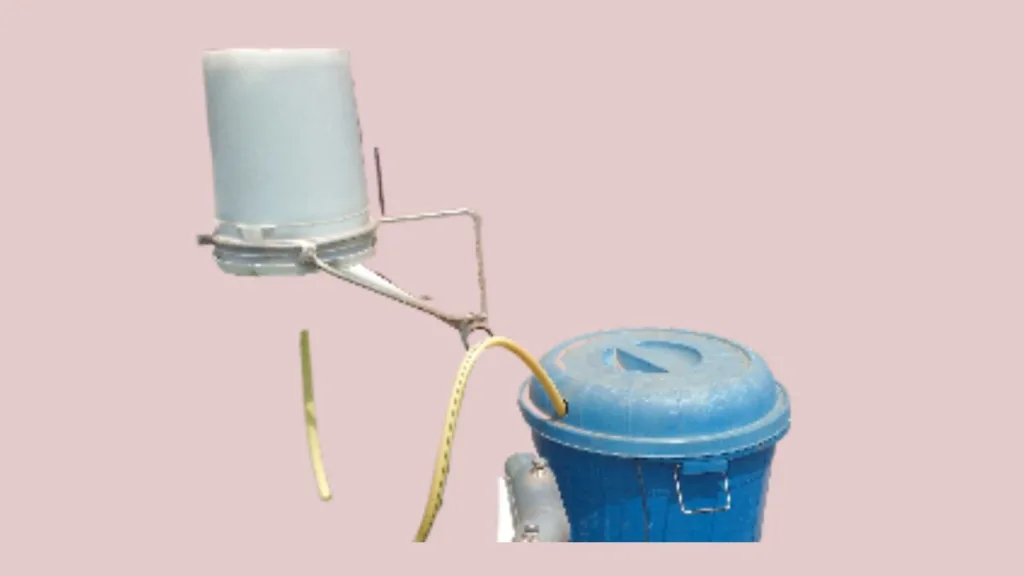
Policy and Infrastructure Support
- Government policies play a crucial role in addressing climate change impacts on aquaculture. Developing and implementing climate change policies specifically tailored for aquaculture. This can provide the framework for adaptive management and mitigation efforts [7].
- Infrastructure improvements, including the development of climate-resilient aquaculture facilities and technology, are essential. This includes early warning systems for extreme weather events and diseases. it can help fish farmers prepare and respond more effectively to climate-related threats [14].
Research, Development, and Knowledge Sharing
- Further research is needed in areas such as genetic improvement, bioresource utilization, and technological advancements to enhance the quality and sustainability of aquaculture production [7].
- Strengthening international cooperation and knowledge sharing on climate change adaptation strategies for aquaculture can facilitate the spread of best practices. And also innovative solutions across different regions [14].
By implementing these adaptive strategies, aquaculture can move towards a more sustainable and resilient future. This mitigates the impacts of climate change while securing the livelihoods of those dependent on fish production [1][7][14][15].
Case Studies of Successful Adaptation in Aquaculture
In the face of climate change, aquaculture has seen notable adaptive successes that serve as benchmarks for the industry. These case studies highlight the innovative approaches and strategies implemented to ensure the sustainability and resilience of fish production.
Globally Important Agricultural Heritage Systems (GIAHS) and FAO Initiatives
- The FAO’s Global Information System on Water and Agriculture has been instrumental in preserving agricultural heritage. Its including aquaculture sites that have withstood the pressures of modernization [16].
- FAOSTAT’s comprehensive data for over 245 countries aids in tracking aquaculture progress, facilitating informed decisions for sustainable practices. This, coupled with insights from the FAO’s flagship publications, such as ‘The State of Food Security and Nutrition in the World 2023’. It provides a rich resource base for enhancing aquaculture sustainability [16].
- Through its regional and country offices, the FAO has spearheaded various projects aimed at sustainable aquaculture, demonstrating the critical role of policy and infrastructure support in adaptation efforts [16].
The Grouper Livelihood Program (GLP) in Palawan, Philippines
- Initiated in 2006, the GLP aimed to offer a sustainable alternative to wild grouper fisheries by promoting the growth of hatchery-bred grouper fingerlings [17].
- Key achievements included reducing the local demand for wild juveniles sourced through cyanide fishing and providing a consistent source of juvenile grouper to farmers, thereby enhancing food security and livelihoods [17].
- Despite facing challenges such as import regulation, navigation and changes in local administration. The GLP’s efforts in building capacity for sustainable aquaculture in Palawan have been commendable [17].
Aquaculture Training Program in Florida, USA
- A federally-funded training program launched in 1991 by the Florida Department of Labor and Employment Security. They targeted unemployed or underemployed oyster harvesters, incorporating clams into its curriculum [17].
- This initiative resulted in 130 individuals receiving aquaculture leases, culminating in 102 clam operations by 2018. The reported sales worth $14.3 million, showcasing the program’s significant impact on local aquaculture and economy [17].
These case studies exemplify the effectiveness of targeted interventions, innovative aquaculture systems, and the importance of policy and community engagement in adapting to the challenges posed by climate change. Through such endeavors, the aquaculture sector can continue to thrive, contributing to global food security and economic stability amidst environmental uncertainties.
Conclusion and Future Perspectives
Through the exploration of climate change impacts, challenges, and adaptive strategies in fish production. It becomes evident that sustainability and resilience in aquaculture are attainable goals. This article has highlighted the direct and indirect effects of climate change on aquatic ecosystems. Its emphasizing the urgent need for adaptive management and sustainable practices. By incorporating the lessons from successful case studies and applying them to the evolving challenges of climate change. The aquaculture sector can navigate towards a more sustainable future. Securing both food security and economic stability worldwide.
Moreover, the significance of policy support, technological innovation, and international cooperation cannot be overstated in this endeavor. As we move forward, further research and development are imperative to refine and expand adaptive strategies that enhance the resilience of aquatic ecosystems. By fostering a collaborative approach among stakeholders, including fish farmers, policymakers, and researchers, we can ensure the long-term sustainability of fish production in the face of climate change. Thus contributing to the well-being of communities reliant on aquaculture and fisheries for their livelihoods and cultural practices.
FAQs
What are the key strategies for adapting to climate change?
The four main strategies to adapt to climate change include constructing safer and more sustainable buildings and infrastructure. Replanting and restoring damaged ecosystems, diversifying crops to better withstand changing climates. And researching and developing innovative solutions to prevent and manage natural disasters.
How do fish species adapt to the changing climate?
Fish have shown the ability to adapt to warmer waters gradually, with these adaptations being passed down to their offspring. This process involves molecular switches that can activate or deactivate certain genes. Allowing future generations of fish to inherit enhanced survival capabilities in warmer conditions.
What are the primary effects of climate change on fish species?
The principal impact of climate change on fish species encompasses sudden temperature increases and ocean acidification. This can lead to the loss of marine habitats and species. Additionally, changes in ocean currents and warmer waters are altering fish stock distribution and the overall structure of marine ecosystems.
In what ways does climate change impact fish reproduction?
Climate change, especially its rapid pace and the disruption of breeding habitats, poses a threat to fish reproduction. This can jeopardize successful breeding and survival rates. Impacting the long-term sustainability of fish populations in both aquaculture systems and natural marine environments.
References
[1] – https://www.frontiersin.org/articles/10.3389/fsufs.2021.609097
[2] – https://www.globalseafood.org/advocate/climate-change-effects-on-aquaculture-production/
[3] – https://www.nature.com/articles/s41467-022-30991-4
[4] – https://oceanconservancy.org/blog/2023/10/27/how-climate-change-affect-fisheries/
[5] – https://www.pnas.org/doi/full/10.1073/pnas.0702059104
[6] – https://www.oecd.org/greengrowth/fisheries/climatechangeandfisheries.htm
[7] – https://iwaponline.com/jwcc/article/13/7/2671/89268/Sustainable-development-of-climate-resilient
[8] – https://media.fisheries.noaa.gov/dam-migration/mafac_report_reslience_appendix_b_aquaculture.pdf
[9] – https://www.fao.org/3/i5612e/i5612e.pdf
[10] – https://www.c2es.org/document/aquatic-ecosystems-and-global-climate-change/
[11] – https://www.pewtrusts.org/-/media/legacy/uploadedfiles/wwwpewtrustsorg/reports/protecting_ocean_life/envclimateaquaticecosystemspdf.pdf
[12] – https://www.eea.europa.eu/publications/how-climate-change-impacts
[13] – https://www.frontiersin.org/articles/10.3389/fsufs.2022.829157
[14] – https://www.nature.org/en-us/what-we-do/our-insights/perspectives/aquaculture-food-world-changing-climate/
[15] – https://typeset.io/questions/how-can-aquaculture-be-made-more-resilient-to-climate-change-uax1do3crx
[16] – https://www.fao.org/documents/card/en?details=b7f455da-18e4-48f7-ab6d-101753de0443/
[17] – https://reefresilience.org/wp-content/uploads/Aquaculture-Case-Studies-Email.pdf
